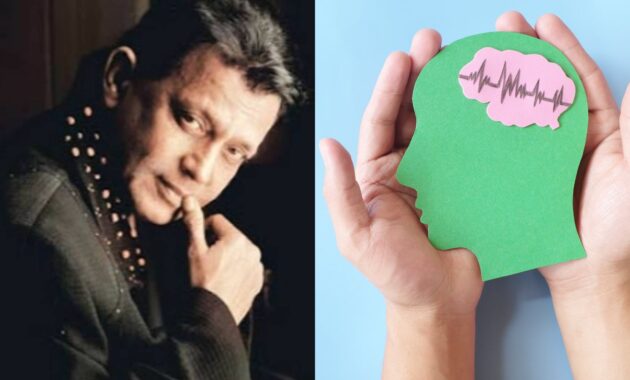Recently, veteran actor Mithun Chakraborty suffered from an ischemic cerebrovascular stroke which occurs when blood clots in the brain. Know everything about ischemic cerebrovascular stroke.
Indian film industry veteran Mithun Chakraborty was recently admitted to a hospital in Kolkata following complaints of chest pain recently. Known for his unparalleled contributions to the film industry, the news of the actor came as a shock to many fans. Reports suggest the 73-year-old actor was diagnosed with an Ischemic Cerebrovascular Stroke of the brain. He is out of danger, but his sudden stroke has steered attention towards this health condition, its symptoms and prevention tips.
Ischemic stroke or ischemic cerebrovascular stroke is a condition that reduces the oxygen and blood flow to the brain, causing damage or death of brain cells. Here’s everything you need to know about the disease.
What is ischemic stroke?
A blood clot that obstructs an artery supplying the brain can cause an ischemic stroke by reducing blood flow and depriving brain tissue of nutrition and oxygen. A thrombus, or clot that forms locally, or an embolus, or clot that travels from another region of the body, could be the source of this obstruction, says Dr Vipul Gupta, chief of Neurointervention and chief of the stroke unit at Artemis Hospital.
Did you know stroke is the fifth most common cause of death around the world? According to a 2017 study published in the Indian Journal of Medical Research, incidences of stroke ranged from 105 to 152/100,000 people per year. Stroke incidents were higher in some cities, including Kolkata and Trivandrum, as per a report published in the International Journal of Stroke.
Also Read


What are the symptoms of ischemic stroke?
The symptoms majorly depend on the region of the brain affected by an ischemic stroke. However, here are some common symptoms of the problem you should know about:
- Sudden weakness or numbness: The condition affects one side of the body, most frequently the arm, leg, or face. It can make it difficult to move.
- Confusion: You may feel confused and find it difficult to process information or make decisions.
- Trouble speaking or understanding: Speech could become slurred, making it difficult to understand what is being spoken. It can also lead to anxiety and frustration.
- Vision problems: The patient may experience blurriness or loss of vision in one or both eyes.
- Dizziness or loss of balance: It may cause unsteadiness and dizziness. It may impair coordination which could make basic activities like standing and walking challenging.
- Headache: The patient may experience an excruciating headache without a cause.
- Trouble in walking: Patients may face difficulties in coordinating or maintaining balance. You could lose your freedom if walking becomes unstable or perhaps impossible.
Also Read: 8 health issues that appear harmless but can trigger stroke

Healthshots Inner Circle An exclusive wellness community for women
JOIN NOW
What are the risk factors of ischemic stroke?
The main risk factor for ischemic stroke is circulatory conditions due to a rise in blood clots or fatty deposits. Some of the risk factors of ischemic stroke include:
Select Topics of your interest and let us customize your feed.
PERSONALISE NOW
1. High blood pressure
High blood pressure or hypertension puts more strain on the arteries, which increases the risk of artery damage and blockages that can result in a stroke.
2. High cholesterol levels
Elevated blood cholesterol levels may play a role in the development of plaques, or fatty deposits, in the arteries, which restrict them and raise the possibility of clot formation.
3. Diabetes
As diabetes increases insulin resistance, inflammation, and blood vessel damage, people with diabetes are more likely to experience cardiovascular events such as stroke.
4. Smoking
The risk of stroke is greatly increased by the toxic compounds in tobacco smoke, which clog blood vessels and encourage the formation of blood clots.
5. Excessive alcohol consumption
Excessive alcohol use can cause additional health problems that increase the risk of stroke, as well as elevate blood pressure and irregular heart rhythms.
6. Obesity
Being overweight is linked to an increased risk of stroke, especially around the waist. Additional risk factors like high blood pressure, diabetes, and cholesterol are all exacerbated by obesity.

7. Lack of exercise
A lack of physical activity exacerbates existing stroke risk factors, impairs the cardiovascular system, and raises the chance of obesity.
8. Certain health conditions
Atrial fibrillation, sickle cell anemia, clotting disorders, and congenital heart defects are some of the common risk factors that could increase the risk of ischemic stroke.
How to prevent ischemic stroke?
The key to preventing the risk of an ischemic stroke is to lead a healthy lifestyle and look out for signs that indicate you’re at risk. Having said that here are some preventive measures that Dr Gupta suggests you can take to reduce the risk:
- Manage risk factors like atrial fibrillation, congenital heart defects, and more.
- Quit smoking and avoid drinking alcohol.
- Manage underlying conditions such as diabetes and high blood pressure.
- Keep your cholesterol levels in check by leading a healthy lifestyle.
- Maintain a healthy weight through diet and exercise.
- Exercise regularly and eat a healthy diet rich in fruits, vegetables, and whole grains.
- Regular visit to the doctor is a must, especially if you suffer from an underlying disease.
#Ischemic #stroke #Symptoms #prevention
